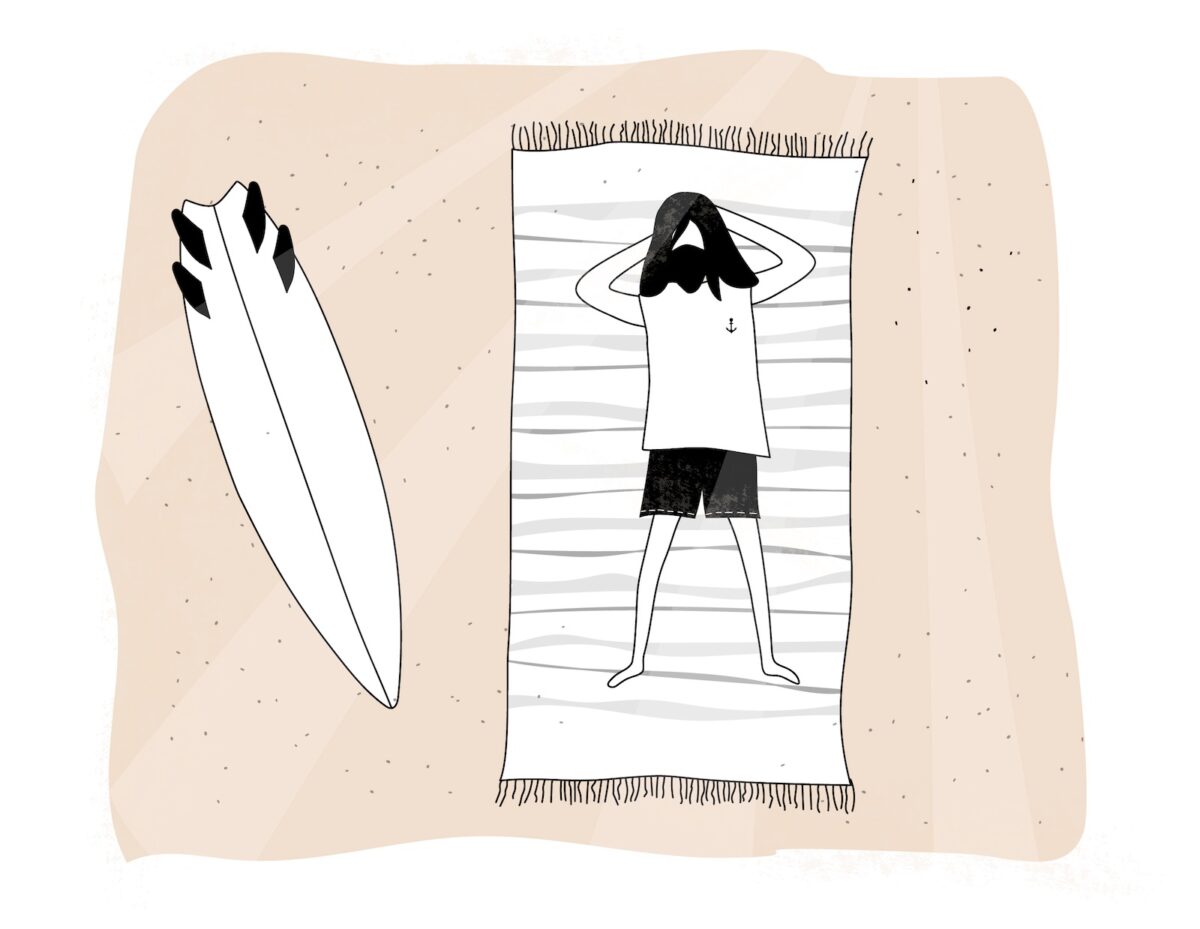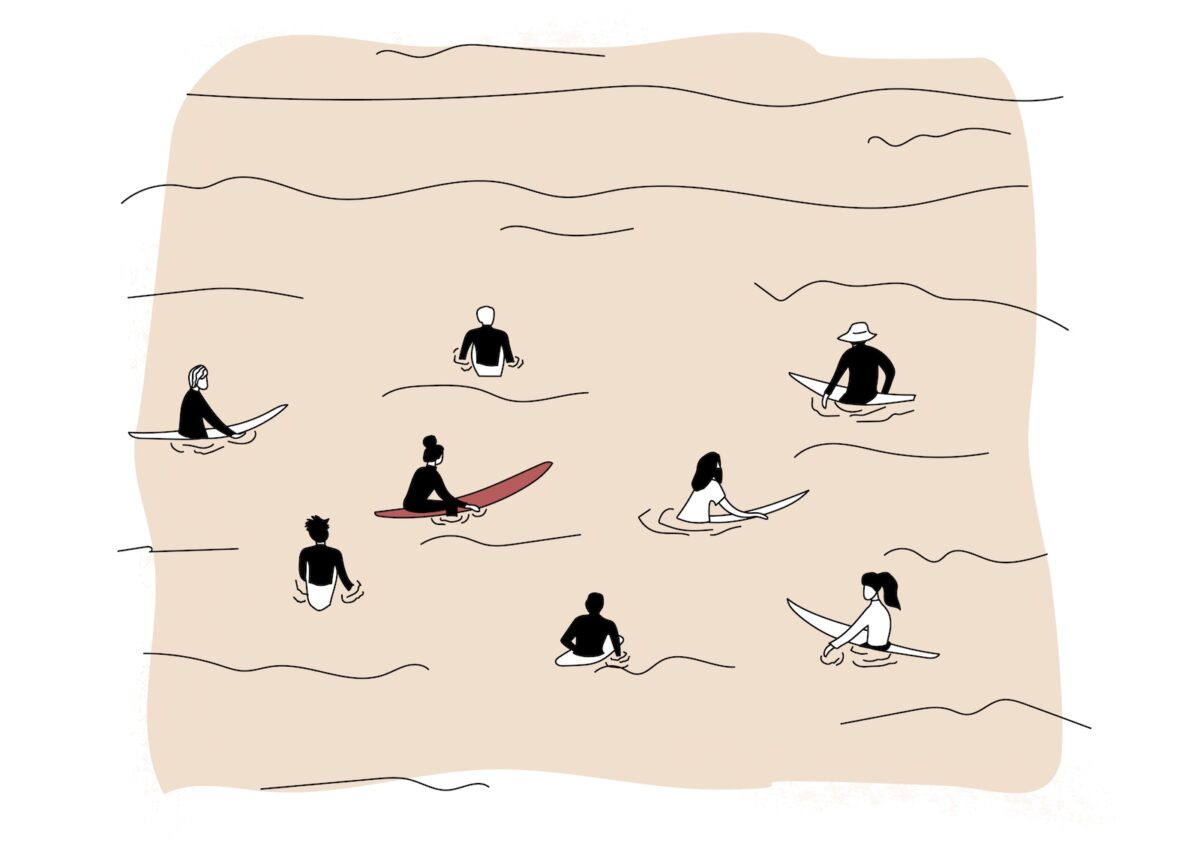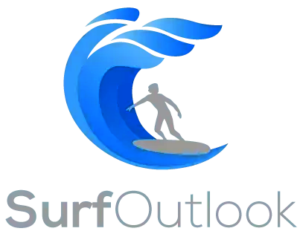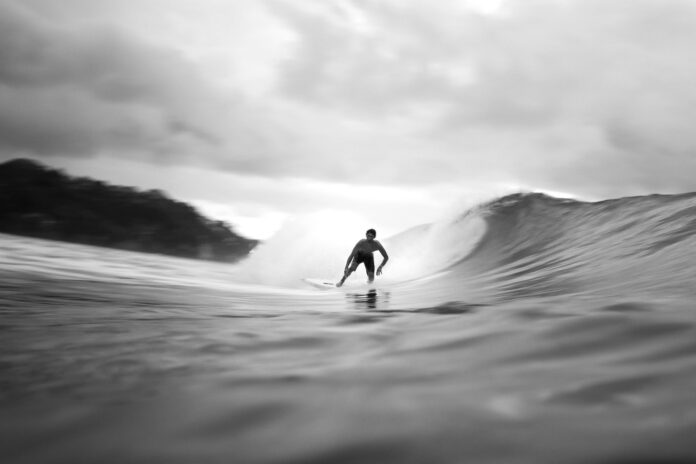Last updated:
Surfing is for fun; surfing is for everyone.
Forget cryptocurrencies, real estate, and savings — your health is your wealth. And if you are serious about growing your health, then surfing is the ultimate investment.
The main reason that surfing has so many health benefits is because surfing is a lifestyle. And good health, according to Mr. Pipeline himself, Gerry Lopez, is only achieved by “maintaining a lifestyle based on a correct diet, sufficient exercise, proper rest, recreation, and the right attitudes of mind.”
The surfer’s lifestyle checks all of these health boxes, and then some. If you want to look good, feel good, and express yourself — all while making a few friends — then it’s time to enjoy the ride and let surfing pay the dividends.
Whole body workout
It’s no secret that surfer’s have great bodies. There’s a reason that Kelly Slater was once described as “Half fish, total dish” on the cover of Andy Warhol’s Interview Magazine in 1996.
The surfer’s body comes in part from the massive amount of calories that a session can burn. You might wonder how riding on a board can trim so much energy. If the wave is long enough, even a minute ride can leave your legs with a burn similar to an uphill hill sprint. But the truth is, unless you are tow surfing, surfers spend most of their time paddling — paddling out to the break; paddling against the rip to stay in the line up; paddling hard to catch the wave; and then all over again.
John-John Florence once burned an astounding 5,000 calories in a 5-hour session at Hale’iwa — and he only caught two waves. Hale’iwa is known for its noodle arm producing paddle due to the swift moving rip that, according to Magicseaweed, “draws water from the Avalanche reef flush-out and races right across the outer edges of Hale’iwa’s reef.”
Not only does all of this paddling burn calories, it works out many muscle groups in the body. When you dig your arms into the water you engage your back, biceps, chest, deltoids, latissimus dorsi, obliques, shoulders, trapezius, and triceps. Duck diving under a wave engages the hands, and if you duck dive like John-John, your knees.
Popping up hits the chest and triceps again. And of course, all of the time you are constantly shifting your head to maintain awareness of the changing ocean, giving your neck a serious workout. Finally, once you are up and surfing your feet, hips, legs, and core take the brunt of the action. From paddling to pulling out, surfing is a whole body workout. Outside of setting fire to calories, surfing helps you build lean muscle, cardio, strength, and cat-like balance.
Nature’s spa and the surfer’s diet
The surfer’s glow comes from simply spending time on the coast because nature’s spa has health benefits. Sand, seaweed, and salt are all natural exfoliants. Salt, seawater, and seaweed are also common beauty products for promoting your hair health. In fact, people have bathed in the sea for its health benefits since the 19th century. It’s called thalassotherapy. Time near the sea is much more than a good time to soak in some vitamin D, it’s a natural rinse in nature’s rich mineral bath. So when you’re surfed out and need a rest, just relax on the beach and let mother nature bring out the natural beauty in you.

And when surfer’s finally get out of the water, the vitamins and minerals keep pouring in. The surfer’s diet isn’t your typical American diet. While everyone is different, many surfers rely on fresh fruits, vegetables, eggs, nuts, and whole grains to keep their energy up. Just take a look at the Vans Pipe Masters: Competitor Profiles, the Hawaiians featured so far — BettyLou Sakura Johnson, Bethany Hamilton, Ivan Florence, Kala Grace, Matt Meola, and Pua Desoto — are all eating fruits, veggies, eggs, nuts, and whole grains for breakfast. And there’s no doubt that they’re all in great shape and surf even better.
Flow and show your soul
More than a literary conflict, surfing is an installment of human versus nature that teeters between risk and nirvanic joy. The ocean is an unforgiving place, but in those moments that you become one with the ocean, you truly awaken — though in these divining moments you may actually lose your everyday sense of self.
This is what surf journo Steven Kotler describes as the flow state. In flow, you become so immersed in the here and now that ordinary concepts like self, time, and space warp into a fleeting feeling of eternity. Mihaly Csikszentmihalyi, who coined the term flow, believed that the state contributes to psychological health and happiness. Various researchers have linked flow states to other beneficial advantages like healthy emotional regulation, enhanced performance, and creative expression of the skills involved in the immersive task. In surfing, all of these flow elements come together in the expression session.
If comp surfing is a sport, then an expression session is transformative art. The first official expression session took place in the 1970s on the North Shore of Hawaii, Oahu. Rather than subject the world’s best surfers to judges, scores, winners, and losers, surfers simply went out and expressed themselves on the waves. Today, an expression session refers to a time when a surfer expresses their surfing style in its raw and beautiful entirety. There is an air of emotion to the session; a catharsis pours out of the surfer as they draw news lines, push the limits of their performance, and lay it all on the line while boosting their creativity in a spontaneous way. When you have a bad day, and your emotions feel like they are weighing you down, an expression session helps you let it all go, and then some.
Healthier headspace
If you want to figure out the mental health benefits of surfing, simply take a surfer out of the water for some time and observe. They might get anxious, distant, sad, and angry. One dip back in the ocean and all those adverse feelings can wash away with the tide. This is more than a thought experiment devised from personal experience. These days surfing is actually being explored as a prescription to help treat mental health issues. Just this year England’s National Health Service announced that it would explore whether or not an outdoor activity like surfing could help reduce symptoms of anxiety and depression in youth. Even the ever popular freesurfer and YouTube sensation Ben Gravy says that he uses daily surfing therapeutically to stay sober and stoked since quitting alcohol in 2015.
The idea of surf therapy essentially combines two approaches for bettering mental health: exercise and spending time outdoors in blue spaces like the ocean. While surfing can benefit anyone, studies on surf therapy focus on how surfing can be used as a mental health intervention. It’s worth noting that one study suggests that surfing is not typically a standalone therapy, but is best used in conjunction with traditional approaches.
A 2020 review of surf therapy literature identified several populations that could benefit from this type of intervention, including adults recovering from addiction, children and youth in need of social and emotional support, youth with disabilities, active duty military members, veterans, and young adult cancer survivors. A more recent 2022 review on surf therapy reveals that the intervention could have a wide range of positive effects on overall mental health, improving symptoms of anxiety, depression, and post-traumatic stress disorder (PTSD), in addition to building resilience and self-confidence.
A 2022 infographic posted in the British Journal of Medicine neatly summarized the short-term and long-term mental health benefits of surfing. In the short-term, a half hour session in the water can improve your mood and make you feel at peace. In the long-term, surfing can improve confidence, self-esteem, and well-being. But the benefits of surfing can extend beyond the individual and lead to improvements in social-wellbeing too.
Social connectivity

While the trope of the lone surfer — hunting for solo sessions in far flung places — carries on, there’s rarely someone who regularly surfs without knowing a few others who do it. In fact, by the growing reports of overcrowded lineups, it’s safe to say that people surf together. Surfing with family and friends brings a shared joy that sends shockwaves of stoke to all. Most people love sharing a wave with someone they know. But sometimes crowded lineups mean sharing waves with people you don’t know. Instead of harboring cynicism, taking the Brodus Rogers approach to crowd surfing will make you more friends than enemies,
Surfing in crowds is like mind over matter. If I don’t mind it don’t matter.
And when you make more friends surfing, you have more joy (and waves) to share. This is the essence of the Aloha Spirit: a harmony of one’s mind and heart. In Hawaiian Law, the Aloha Spirit decrees that “each person must think and emote good feelings to others.” Gerry Lopez once said that successful surfing brings an inner sense of peace, and that “by sharing this peace, and contributing to other people’s happiness, we can find the true meaning of life. Keep surfing.”
Remember… surfing is for fun; surfing is for everyone.






